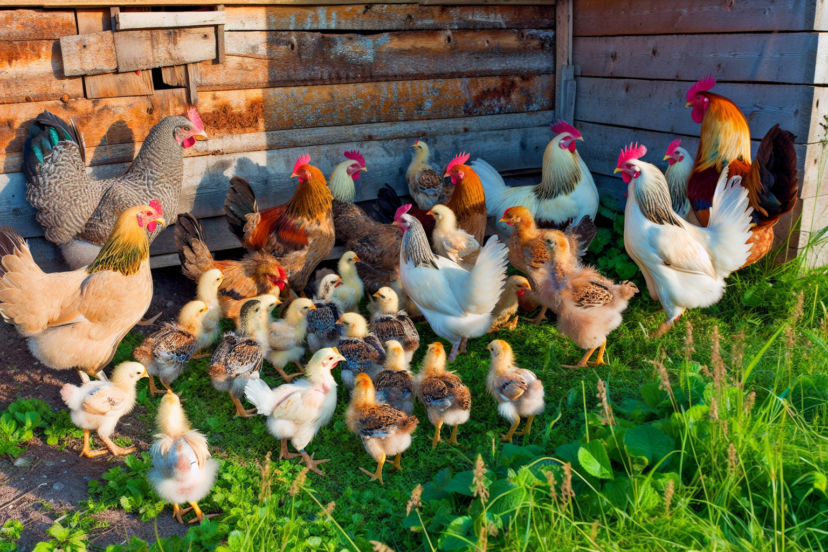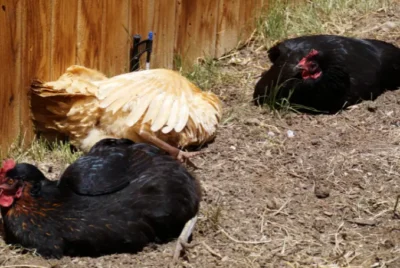Raising 8 Week Old Chickens: Growth, Care, and Tips for Healthy Flocks
Moving your 8 week old chickens to their new coop can feel daunting. From ensuring ample space for your growing birds to mixing them with older chickens, each step is crucial for their wellbeing. In this article, you will find guidance on care, nutrition, and habits, all to support your chicks during this pivotal growth stage. We’ll help you navigate these next few weeks with confidence, keeping your young chickens healthy, active, and social.
Transitioning to the Chicken Coop: Preparing for 8 Week Old Chicks
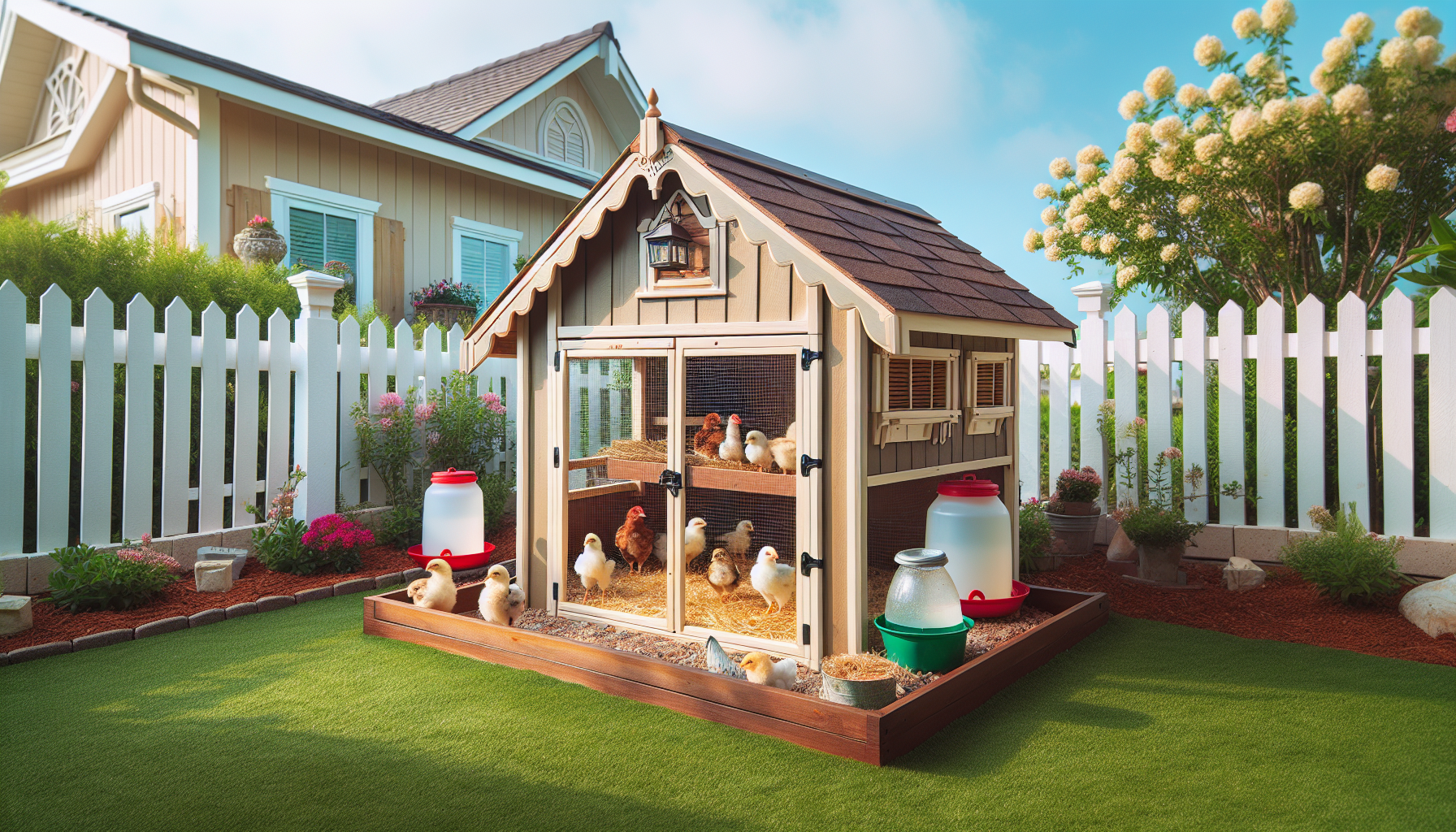
As your chicks fluff up and grow, their needs change as well. Around eight weeks of age, they’re ready to leave the brooder and transition to the chicken coop, their new home. However, prior to the relocation, you must confirm that the coop is prepared for their arrival.
Ensuring the new home is toasty enough for your chicks, giving them enough space to stretch their wings, and maintaining cleanliness are the key factors for a smooth transition. We’ll examine the specifics of each of these critical steps.
Gradually removing supplemental heat
For the first few weeks of their lives, chicks rely on supplemental heat to keep them warm and cozy, maintaining an optimal brooder temperature. But as they grow, they start to feather out, developing the ability to regulate their body temperature. Now is the right moment to gradually lessen the supplemental heat and assist them in adapting to cooler temperatures.
A lower wattage bulb can serve as a less intense heat source than heat lamps, thereby gradually adapting them to lower temperatures. Keep in mind, this step is pivotal before transitioning chicks to outside temperatures, therefore make sure the shift is seamless and devoid of stress. In this context, a heat lamp can be replaced with a lower wattage bulb to ensure a smooth transition.
Ensuring adequate floor space
As your chicks grow, so does their need for space. From weeks 6 to 8, your chicks experience rapid growth, and consequently, their space requirements double. So, how do we meet this escalating need?
The recommended floor space for 8 week old chicks is three to four square feet per bird to accommodate their growth. Providing this space will not only enhance your chicks’ comfort but also foster healthy growth and activity.
Maintaining cleanliness
A clean coop is a happy coop! And more importantly, it’s a key factor in preventing diseases. Routine cleaning habits, including bi-weekly tidying and monthly comprehensive cleaning, are vital for maintaining the health and well-being of 8-week-old chicks.
Using litter that is two to three inches thick can absorb moisture and reduce odor, contributing to a clean environment. Besides disease prevention, clean coops also minimize unpleasant odors and deter rodents and other pests. After all, cleanliness is next to chicken-ness!
Integrating 8 Week Old Chicks into the Existing Flock
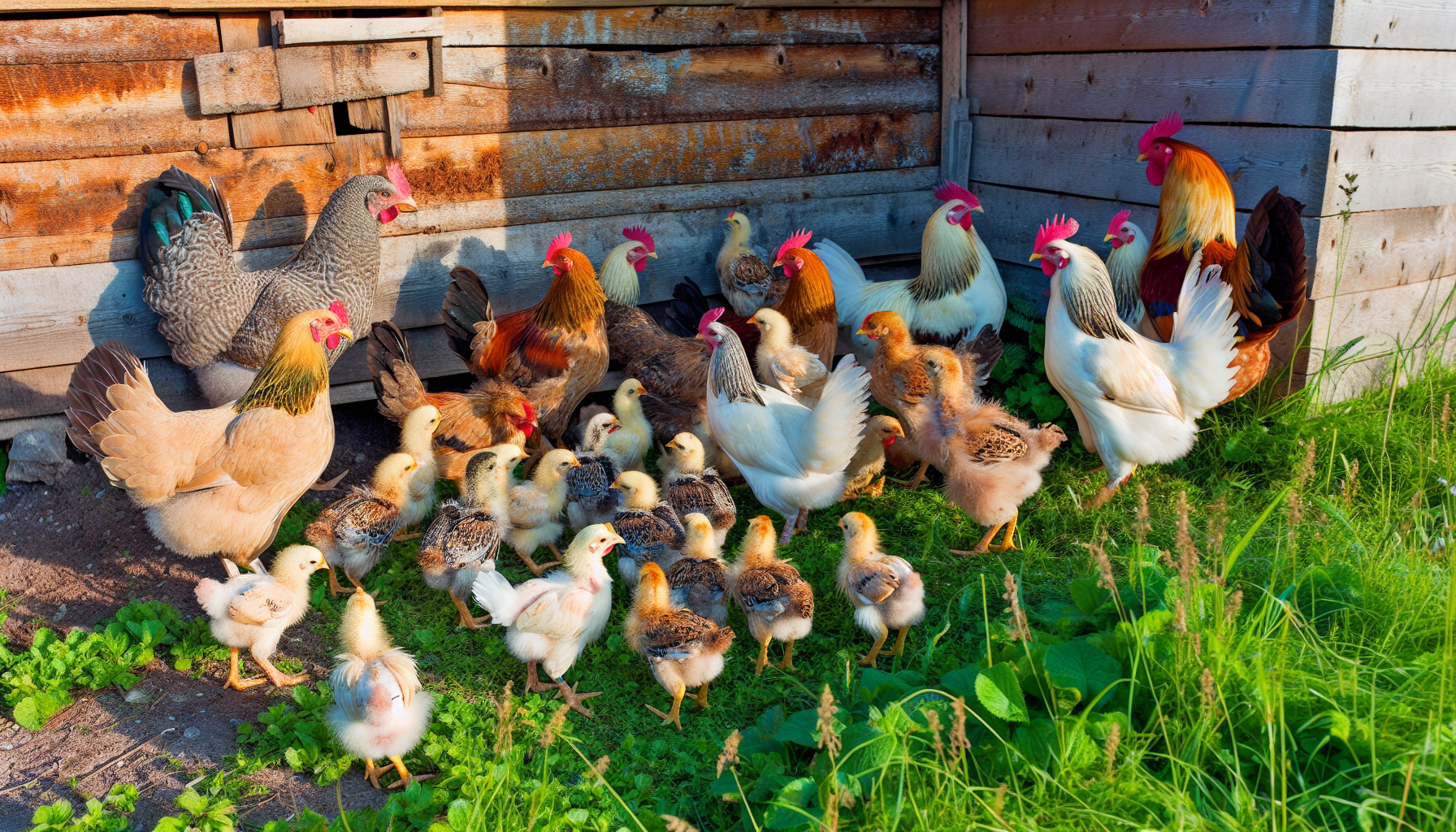
Introducing your 8-week-old chicks, also known as young pullets, to the existing flock of older birds can feel like the first day of school – there are new faces, a bit of nervousness, and an inevitable pecking order to establish. However, fear not, armed with some knowledge and careful planning, you can maneuver through this crucial process successfully.
It’s important to avoid ‘cold turkey’ introductions and instead transition new birds into the flock over a period with acclimatization. Introducing new chickens in groups rather than individually can offer them a sense of security, making them less prone to bullying. We’ll probe further into the steps needed for a successful and seamless integration process.
Establishing pecking order
Much like any social group, there’s a hierarchy within a chicken flock, often referred to as the pecking order. This social structure is typically established around the third day of a chick’s life, primarily through interactions at feeding times.
Upon introducing new birds to an existing flock, it’s necessary for them to ascertain their position in this pecking order. Introducing them in mixed flocks can mitigate individual stress and conflicts. It’s an integral part of the integration process and essential for maintaining peace within the flock.
Using side-by-side runs or supervised free-ranging
One efficient method to facilitate the integration process is via parallel runs or supervised free-ranging. This method allows the chicks to interact with the older chickens while maintaining a safe barrier, giving them time to adjust to each other’s presence.
Slowly extending the duration of these daytime encounters encourages integration. Using a dog crate or carrier at night inside the coop can protect the chicks from being pecked while they acclimate to the environment and the older flock. Remember, the goal is to create a harmonious environment for all your chickens, both inside and outside coop.
Monitoring interactions
Closely observing the interactions between your new chicks and the existing flock is vital during the integration process. Observing body language and interactions can help gauge how well the integration is progressing.
It’s important to be on the lookout for prolonged fights or bullying during integration, and be prepared to intervene if necessary. Consistent observation helps to ensure the new chickens can be safely left with the flock during the day and at night.
Feeding and Nutrition for 8 Week Old Chicks
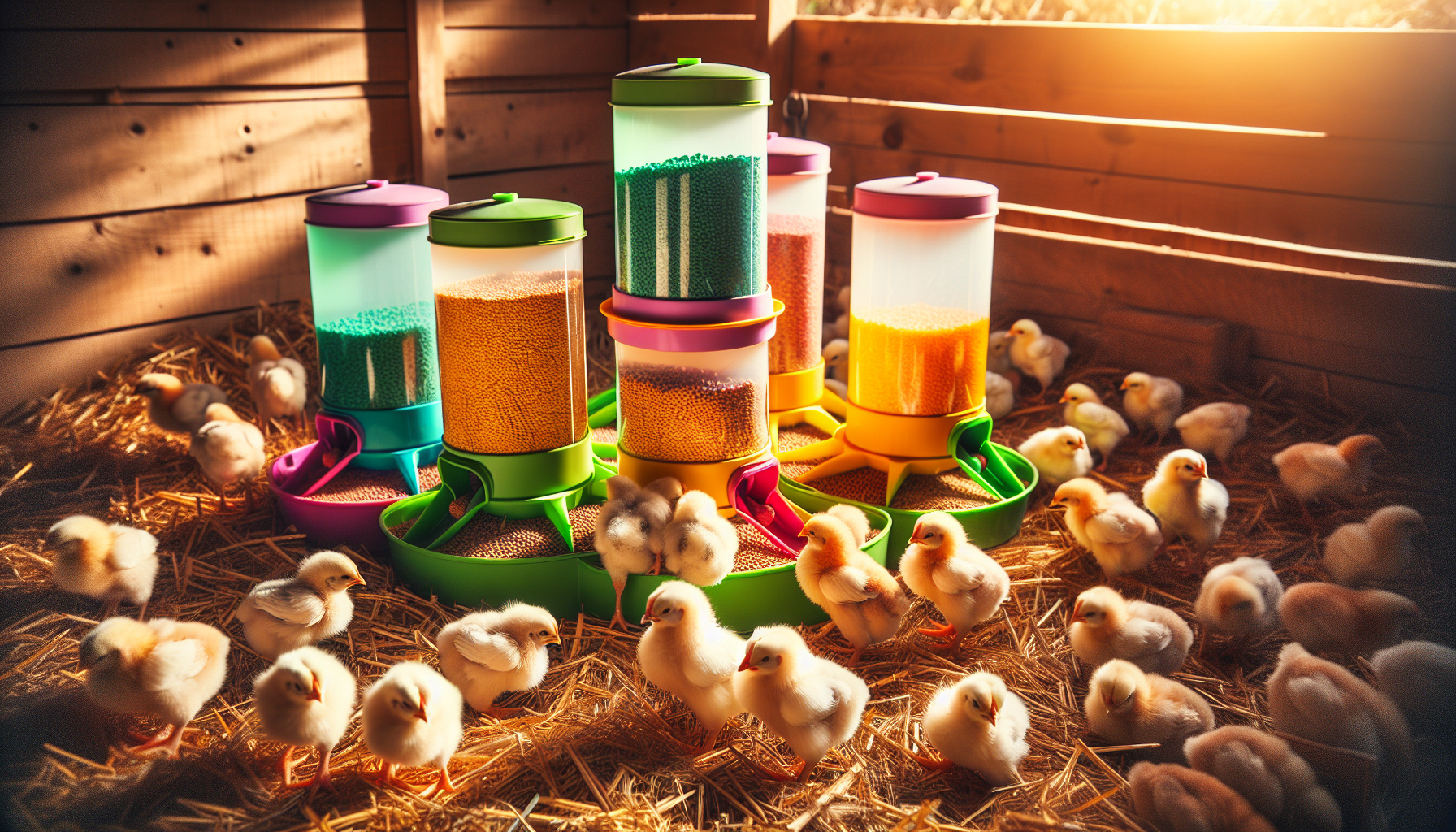
Feeding your 8-week-old chicks involves:
Supplying the nourishment required for them to mature into healthy adult chickens
Continuing to provide them with high-protein starter feed
Providing fresh water
Adjusting feed based on their breed and size
Nutrition is a key factor in your chicks’ development. High-quality grower feed maintains strong immunity and bone strength in chickens, and the amount and type may need to be adjusted based on the chicken’s growth and health. We’ll dissect these feeding necessities.
Continuing with chick starter feed
Chick starter feed is designed to give your chicks a great start in life. It includes:
Complete proteins
Amino acids
Vitamins
Minerals
These nutrients help establish bone health and immunity in your chicks. Even at 8 weeks old, your chicks should continue to have 24/7 access to this high-protein feed.
Remember, the type of feed given should be adjusted according to the chicken’s developmental stage. From 8 weeks until they start to lay eggs, grower feed is recommended. The additional protein in this feed is beneficial, but the calcium in layer feed can cause kidney damage to growing birds, so choosing the right feed is crucial, especially as they approach their laying age.
Providing fresh water
Water plays a vital role in a chick’s diet. It aids digestion, regulates body temperature, and is necessary for growth. Fresh water should be provided at all times, especially when feed is offered, covering the growth period of pullets from 8 to 20 weeks old.
The availability of fresh water is not just about hydration, but also about the overall health of the chicks. So, ensure your chicks always have access to fresh, clean water.
Adjusting feed based on breed and size
Not all chicks are created equal. Some breeds are larger and grow faster than others, and thus, their nutritional needs may vary. Adjusting the feed according to the breed and size of the chicks to cater to their unique needs is essential.
For instance, chicks that don’t forage outdoors should be provided with grit such as small stones or sand separately from their feed to help them digest fibrous foods. Pullets over 8 weeks old can also have a more varied diet that includes treats like fresh fruits and veggies, but in moderation.
Encouraging Natural Behaviors in 8 Week Old Chicks

Chickens are not just about laying eggs. They are fascinating creatures with unique behaviors. Fostering natural behaviors in your 8-week-old chicks is a significant aspect of their development. From introducing free-ranging and providing roosting opportunities to encouraging socialization, it’s all about letting chickens be chickens!
Observing your chicks explore their surroundings is a fascinating experience. Whether it’s their first dust bath or the thrill of free-ranging, these natural behaviors are not just enriching for them but also incredibly entertaining for you.
Read also: Raising 8 Week Old Chickens: Growth, Care, and Tips for Healthy Flocks
Introducing free-ranging
Free-ranging is a key part of a chicken’s life. It provides them with the opportunity to forage for food, explore their environment, and engage in natural behaviors. Providing a screened outdoor run attached to the coop gives chickens safe, unlimited access to explore the yard.
Free-ranging sessions offer chicks an opportunity for physical activity and assist them in honing crucial foraging skills. So, let your chicks out and watch them enjoy their newfound freedom!
Providing roosting opportunities
Roosting is a natural behavior for chickens. It’s a time for them to rest, sleep, and feel safe from predators. And for your 8-week-old chicks, it’s an important skill to learn.
Using thin dowels or small branches as roosting bars in the brooder can help chicks to hop onto perches and practice balancing, a precursor to adult roosting habits. Motivating your chicks to roost contributes significantly to their development and is a substantial stride towards becoming fully-grown chickens.
Encouraging socialization
Socialization is an important part of raising friendly and approachable chickens. Regularly handling and spending time with chicks contributes to their socialization, making them more likely to become friendly and affectionate adult chickens.
It’s about establishing a bond with your chicks. Gradual and consistent handling, combined with patience, can lead to chickens that are easy to pick up and handle in the future. So, spend time with your chicks, handle them gently, and watch as they become friendly, social members of your flock.
Monitoring Health and Growth in 8 Week Old Chicks
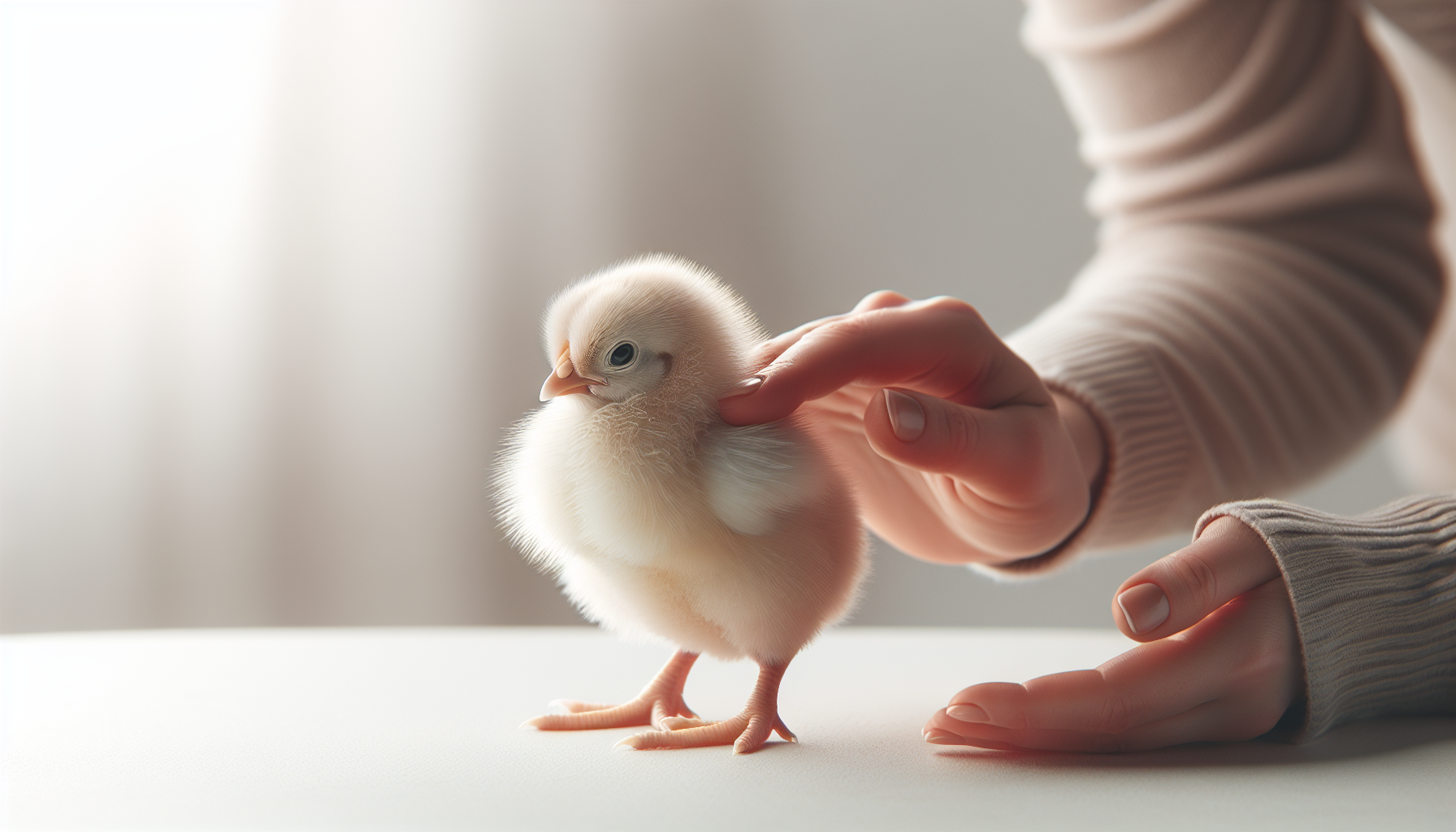
Monitoring your chicks’ health and growth is a key element of chick care. Checking for real feathers, monitoring weight gain, and identifying potential health issues early are all crucial for ensuring your chicks grow into healthy, robust chickens.
As each day unfolds, your chicks are evolving, and it’s your responsibility to monitor these changes. Whether it’s a new feather or an ounce of weight gain, each milestone is a step closer to becoming healthy adult chickens.
Checking for real feathers
Feather development is a significant milestone in a chick’s life. By 8 weeks, chickens will have begun to grow their real feathers, which emerge following the fluffy down coverage they have as chicks.
Healthy feathers signal good nutrition and general well-being; they ought to be smooth and glossy, devoid of signs of pecking or damage. So, keep a keen eye on your chicks’ tail feathers as they become fully feathered. It’s not just about looks; it’s a sign of good health.
Monitoring weight gain
Weight is another key indicator of a chick’s health and development. At 7 days after placement, a chick’s weight should be 4.39 times their initial weight at placement. And by 14 days after placement, it should increase 2.51 times their weight from the 7-day check.
If chicks fail to meet these weight gain benchmarks, it’s vital to reassess and modify management practices to secure their appropriate development. After all, a healthy chick is a growing chick!
Identifying potential health issues
Despite the finest care, chicks can occasionally encounter health problems. It’s important to keep an eye out for any signs of illness and act quickly if you notice anything unusual.
Chickens are susceptible to various diseases, and early detection is key to effective treatment. So, here are some tips to help you maintain the health of your chickens:
Maintain a clean coop
Use medicated starter feed if needed
Don’t hesitate to consult a veterinarian for diagnosis and treatment of suspected health issues.
Summary
Raising 8-week-old chicks is an engaging, rewarding, and sometimes challenging venture. From transitioning to the chicken coop and integrating into the existing flock to feeding, monitoring health and growth, and encouraging natural behaviors, there are many facets to chick care. But with patience, knowledge, and a little bit of love, you can ensure your chicks grow into healthy, happy chickens.
Just remember, every chick is unique, and their journey to adulthood is filled with milestones and growth. So enjoy every moment, cherish every milestone, and remember, you’re not just raising chickens; you’re nurturing life. Happy chick-raising!
Frequently Asked Questions
What to feed chickens?
You should predominantly feed your chickens a balanced pelleted diet and supplement with kitchen scraps, whole scratch grain, and garden foraging to keep them happy and healthy. A nutritionally balanced diet for chickens includes fruits, vegetables, and grains such as leafy greens, cooked beans, corn, non-sugary cereals, and berries.
Where do you keep 8 week old chickens?
By the time they are 8 weeks old, you should keep your chickens in a prepared and predator-proof chicken coop with twice the floor space they started with. It’s important to ensure the coop is secure for their safety.
Do 8 week old chickens need a heat lamp?
No, 8-week-old chickens do not need a heat lamp as they are fully feathered and can regulate their own body temperature.
How much space does each chick need in the coop?
Each chick needs about three to four square feet of space in the coop to ensure they have enough room for their growth and activities.
How can I introduce my 8-week-old chicks to the existing flock?
You can introduce new chicks to the existing flock by introducing them in groups rather than individually to provide a sense of security, and by using side-by-side runs or supervised free-ranging to facilitate acclimation and monitor the interactions closely for a smooth transition. Good luck with the introduction!

